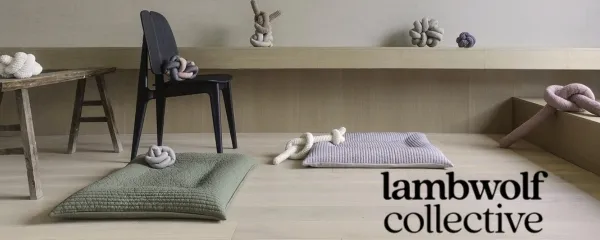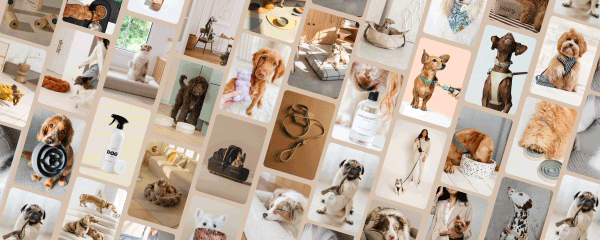Puppy Training 101: How to Stop Your Puppy Jumping and Biting

Survive the dreaded biting phase, with your sanity in tact, by following these simple & effective tips.
Copy: Katy & Shell
‘Help! My puppy is jumping and biting me, what do I do?’
Sound familiar? It’s the cry of many unsuspecting new puppy parents, who, like us, aren’t quite prepared for their sweet little puppy to turn into a miniature version of Jaws.
Knowing how to stop your puppy jumping and biting is a skill many new pet parents will need to learn – quite quickly – to avoid unintentional but harmful behaviour from their fur baby.
There’s no doubt bringing a new puppy into your home is an exciting, memorable and special time in your life. When we brought our cocker spaniel, Sunny, home about 4 months ago, we’ll never forget that amazing feeling of welcoming a new furry member into our family.
We felt an instant and overwhelming sense of unconditional love and protection. It’s a time in our lives we will forever cherish!
HOWEVER...

The truth behind being a new puppy parent
…while we all know puppies are cute and cuddly, what is not talked about nearly as often is that having a puppy can hurt. Like, really hurt.
Being bitten by a tiny puppy is surprisingly painful – their teeth can often feel razor-sharp when they bite! And while you may have all your puppy essentials, you may not be prepared for the dreaded biting phase. Puppy-proofing your home certainly helps too, though your puppy will likely still find things to bite.
Teaching your puppy not to bite is all about understanding what triggers your pup to want to bite in the first place, and getting ahead of those urges and instincts to help deter from causing pain and upset.

Why is my puppy biting me?
If your puppy is biting your ankles, feet, fingers or hands – you’re certainly not alone. Sunny even bit our faces a few times in the early months!
Thing is, puppies bite ALOT while they are still getting to know the world around them. It’s simply their way of discovering the world and learning what certain objects feel like, and if they are good enough to chew on.
It can be a real challenge to teach your puppy not to bite, when biting is their natural way of communication and exploration.
Puppies will bite most often when being picked up, while they are being stroked or petted, or during play time. While biting is a normal and natural behaviour for a puppy to communicate and play with, you really don’t want it to become an everyday habit.
As a new puppy parent, you have a responsibility to teach your puppy not to bite things they shouldn’t – including objects, other animals and people.
So, how can you teach your puppy not to bite and jump?
Here are some tips to train your pup to understand the difference between playful nips and harmful bites, so you can once again enjoy this special time with your new furry family member.
Top Tips: How to Stop Your Puppy Jumping and Biting

Ouch! Give the warning sound
When puppies start to grow, they usually bite as they wrestle with toys or play with other dogs. When they bite down too hard on another dog, the dog will let out a warning sound, much like a yelp or howl. This usually has the effect of snapping your pup out of its biting, therefore releasing the dog.
This is something you can easily mimic when your puppy is biting you during playtime. For example, if you feel that your puppy is beginning to bite too hard or it hurts, you can try letting out a warning sound in the form of a yelp or high-pitched “Ouch!” to cause your pup to back off and release you.
This is also an excellent tool to help train your pup even when they aren’t biting you. If you see your puppy go to bite something they shouldn’t, go ahead and make the warning sound – this should prompt them to stop what they are doing.
Keep in mind that the sound needs to be sharp and shocking, since the idea is not to scare your pup – but to bring it out of biting as more of a surprise. Then, when they react appropriately and release, you can praise and reward them with attention and treats.
This method doesn’t always work as planned however. Sometimes, your pup may become more wound up hearing your cry, making them more likely to continue biting.
While this is rarer, there is a way to combat this behaviour too.

Don’t reward your puppy with attention
BITING
When it comes to puppies (and all dogs for that matter), remember that any form of attention is a reward to them.
So the simplest thing you can do if your puppy bites and hurts you, or if you want to stop your puppy jumping up on you, is to turn around immediately and stop giving them attention.
If you are playing with your puppy and he bites you, you can step over a baby gate or puppy pen if you have one, thus effectively removing yourself from the situation and not further encouraging the behaviour.
Or, simply turn and walk away calmly or put your puppy in their bed or crate, as a means to teach them that you didn’t want that behaviour.
All of a sudden your puppy will realise they have lost their playmate!
JUMPING
You can take a similar approach when it comes to your puppy jumping. As jumping up is a natural, instinctive way for your puppy to greet you and want your attention, they need to learn that they will only receive your attention when they are behaving more politely.
Teaching your puppy not to jump up is essentially about showing them that you’ll only reward them with attention when their paws are on the floor, therefore sending the message there is no need for them to jump.
These easy tips to teach your dog not to jump on everyone covers simple ways to help stop your puppy jumping, which work effectively in conjunction with the basic puppy commands below.

Train your puppy to obey your commands
Take some time to train your puppy to obey specific and simple commands like these top 5 skills to teach your dog, which can include:
- Sit
- Stay
- Lay Down
- Leave It
- No
- Get
All of these basic dog commands can help put a stop to your puppy jumping and biting. To help master them, you can use old-fashioned voice training, clicker training, or praise training with lots of pats and cuddles.
It will take time for your puppy to learn these commands, so always remember to be patient. Work each and every day with your puppy to train them, even if it’s just for a short period of time. Once they have a good handle on your commands, you’ll be able to use them anytime you wish to correct their behaviour, especially when your puppy is jumping and biting.
If you feel that your pup isn’t doing well at obeying your commands, you might consider taking them to a puppy training class where you can work directly with a professional.
There are many obedience classes available for new puppies, which can help you teach your puppy not to bite. These trainers will have worked with many different types of dogs and breeds, so they can provide you with some of the best tactics and strategies to use at home that will reinforce everything they learn in class.

Positive reinforcement during puppy training
We cannot stress enough how important positive reinforcement training is when it comes to training your puppy.
Praising your puppy when they perform good behaviours, such as playing quietly or sitting calmly, are great tools to help train your puppy not to jump or bite. Your puppy will also soon recognise that they earn rewards when they behave a certain way, so they will be much more likely to repeat those good behaviours.
Rewarding your puppy can be done in a number of ways:
- Give treat rewards (healthy dog treats in moderation!)
- Give plenty of pats and rubs, whether on the belly or behind their ears
- Combine a positive verbal reward, such as ‘good boy’ or ‘good girl’, at the same time you are giving cuddles and pats
- Play fetch, or give your puppy a chew toy, enrichment toy or game to reward and motivate good behaviour
As we mentioned above, puppies LOVE attention.
The key point being: always shower your puppy with rewards and happy attention when displaying proper behaviour – but immediately cease all attention when they misbehave.

Teething alternatives
Puppies go through teething much like babies do, so they like to work their teeth on everything they come in to contact with.
In order to teach your puppy not to use random objects, other dogs or pets, or yourself as their chewing toy, finding effective and quality dog toys can really help with this phase of their life.
When you notice your puppy is biting, or trying to bite you, you can offer up chew toys or squeaky toys as alternatives. This will help them to understand these are the only objects your puppy should be biting.
Keeping a chew toy around at most times, especially during their teething phase, is definitely a good idea!

Puppy cuddle time, minus the bites
Because you love your cute and cuddly puppy, it’s second nature to want to pet them, stroke their faces and paws, and rub your hands and fingers on their bellies and across their little fluffy bodies.
The thing is, these behaviours are not natural for puppies, and it takes time for them to learn that this is how us humans interact with them. Many puppies, understandably, see our hands, wiggly fingers (and even our toes) as something they want to play with (and by play, we mean attack!)
And because we most often use our hands to interact, these tend to be a particular target for puppy bites. So to help stop your puppy from biting your hands, you need to stop letting your hand become the toy.
Rather than playing with your puppy with your bare hands, such as when you are rubbing your puppy’s belly, use a chew toy or rope toy they can tug and chew instead.
If you want to sit down and stroke or cuddle your puppy, you can use either food treats, or hold a chew toy with one hand. This will allow your puppy to calmly chew away, then allowing you to pet them without being bitten.

Calling an end to playtime
One last way to enforce the “no biting” rule with your puppy is that if your puppy is biting on you, another pet, or a family member while playing, then playtime is over.
When they learn they receive no reward when biting, your puppy will begin to associate their biting behaviour with losing out on playtime, and therefore learn not to behave that way.
Remember, yelling at or scolding your puppy is a form of praise since they are receiving attention from you. Try not to give your pup anything when they bite, but physically walk away so they understand you are withdrawing from them, which will encourage better behaviour.
Note that play biting doesn’t indicate that your dog will be like Jaws forever! However, it is important to monitor and put a stop to your puppy jumping and biting too much, or causing pain while they are still at a young age. Here are a few key behaviours to look for to know whether your puppy is just innocently playing with you, or showing signs of puppy aggression.
If you have more in depth questions about how to teach your puppy not to bite and would like to speak to a professional, we always recommend to consult with a professional dog trainer or veterinarian.

When do puppies stop nipping & biting?
When your puppy is going through teething and the not-so-fun biting phase, it feels like there is no end in sight!
While biting, nipping and jumping is a challenging and sometimes painful stage of puppy development, it is completely natural puppy behaviour.
Most puppies will begin to come out of their teething and biting phase from around 4-5 months of age, with the majority of puppies reducing nipping and biting significantly by the time they turn one. Most puppies will completely grow out of this phase by two years of age.
An important point to make here is that the above milestones depend on your puppy’s environment and family interactions.
If you have children that often play with your puppy, or if you inadvertently reward biting when it occurs, it will likely take longer to stop your puppy jumping and biting, and in turn, learn the correct behaviours.

We hope these puppy training tips help put a stop to your puppy jumping and biting, so you and your pup can get through this phase as quickly as possible with your sanity still in tact!
As mentioned above, you can always seek advice from a qualified dog trainer, behaviourist or veterinarian.
We wish you the best of luck!


Find the best dog toys at the Dog Lovers Directory
Discover stylish dog toys, luxury dog lifestyle labels & emerging designer pet brands at the Pretty Fluffy Dog Lovers Directory.
Pretty Fluffy is the ultimate lifestyle destination for dog lovers. Discover the best designer dog brands and emerging small pet businesses, the latest dog accessories, healthy dog treat recipes, dog training tips and more. Thank you for being part of our dog-loving community!









